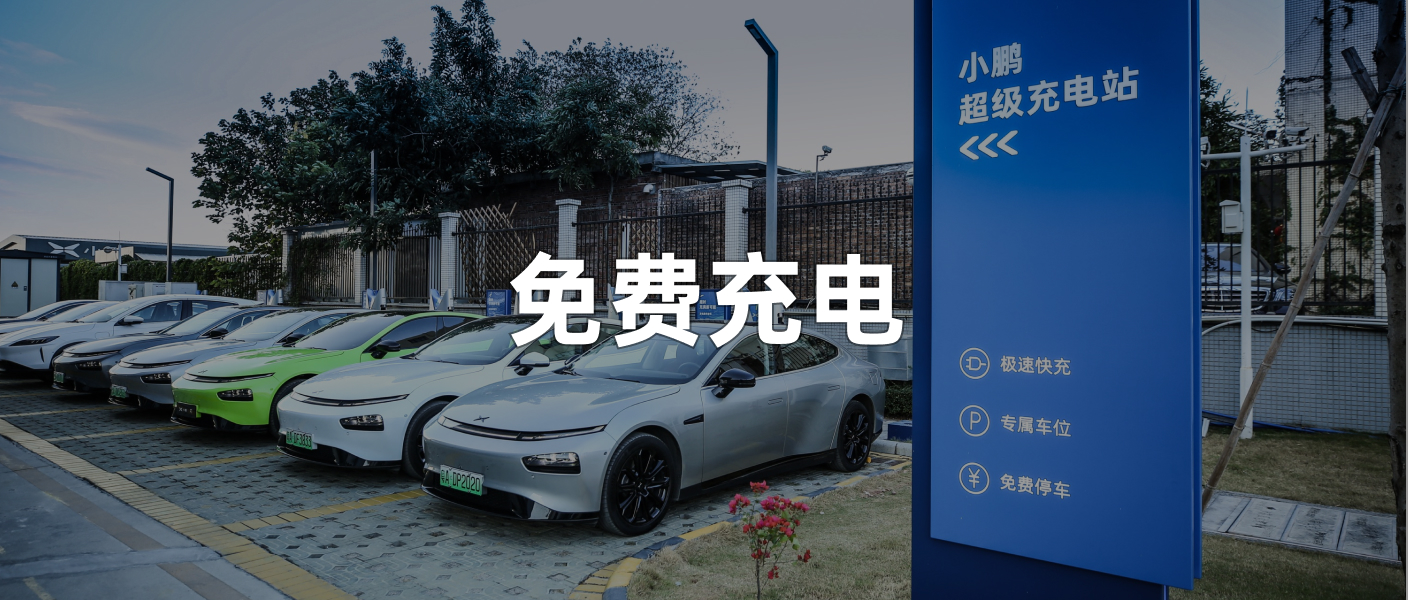On December 29, 2020, XPeng Motors announced that its lifetime free charging stations had reached 670, covering 100 cities.
At the same time, XPeng Motors announced that it is expected to achieve lifetime free charging services in 200 cities by mid-2021, and plans to deploy XPeng Super Charging stations in scenarios such as highways, airports, etc.
As a XPeng P7 owner, after driving for nearly 8,000 km in three months, I feel that the importance of this matter is no less than that of achieving a range of 700 km for a car.
What are the pain points of electric cars?
In 2018, the range of the first-tier electric car models generally reached 400 km.
In 2019, everyone’s range had reached 500 km, and even a few outstanding models exceeded 600 km.
In 2020, 600 km became the norm, and the range of many new cars planned for launch in 2021 were pushed to over 700 km.
In these three years, the range of pure electric vehicles has increased significantly, with an increase of over 70%. The actual range of some long-range models has even reached the level of some fuel cars.
According to statistics from the National Energy Administration, as of the end of June this year, the total number of charging piles in China has reached 1.322 million, of which 558,000 are public charging piles. If each station is calculated with 6 piles, the number of stations is close to 100,000.
If you don’t have a concept of this data, here’s another one.
According to data compiled by the Forward Industry Research Institute, the number of gas stations in China in 2019 was 106,600.
In other words, without including home charging piles, the number of public charging piles has already been very close to the number of gas stations.
However, the ownership of electric vehicles currently accounts for only 1.2% of the total number of cars in society.
Although the range has increased and the number of charging piles has increased, the convenience of using electric vehicles is still not as good as that of fuel cars, and the quantitative change in range and charging piles has not brought a qualitative change in experience. What’s the problem?
Supplementary charging experience.
To give you a more concrete understanding, I will talk about the problems I encountered while charging my P7 in daily scenarios, and those details that can make the charging of electric cars as convenient as fuel cars.
Long-distance travelDuring my nearly 8,000 km of driving, including about 2,000 km of highway travel, there were two iconic trips worth sharing.
Single-charge range is the foundation of user experience
On October 1st, I drove home for the holiday from Shanghai with a full charge (WLTP 576 km). After driving 395 km straight, I arrived home with a remaining range of 87 km without charging along the way.
This means that in the summer, the P7 can run on the highway for at least 5 hours in a row, traveling more than 400 km. Although drivers need to rest every 2-3 hours, it does not mean that you have to charge each time you stop. Drivers have more control over the charging process.
What’s more important is that you don’t need to rely on just one service area for charging. Even if the charging station is out of service, the remaining range can still reach the next charging point.
Therefore, sufficient single-charge range is the basic guarantee of the user experience of an electric vehicle. This single-charge range means that even if the winter range is greatly reduced, electric vehicles can already compete with fuel vehicles on long-distance travel within a radius of 200-300 km.
However, I still don’t dare to drive an electric car for more than 1,000 km of long-distance travel.
Schrödinger’s Highway Service Area
Before the National Day holiday in October, I did not fully charge before departure, but chose to recharge at the charging station of a highway service area along the way.
It was this recharge that highlighted the difference between electric and fuel vehicles.
I thought that the familiar Jinhua charging station could quickly bring me back to a full charge at 90 kW, but the highway service area on October 7th was a little different from what I had imagined.
Not only were there long lines of people near the charging station, but with 4 cars charging simultaneously, I only had a charging power of less than 14 kW. The originally planned 30-minute charging time was extended to 90 minutes, greatly reducing the efficiency.
Of course, we also encountered the following problems during our multiple high-speed range tests:
- Repeated insertion of the charging gun was needed to charge successfully;1. Only two charging piles are all malfunctioned;
- Occupied by fuel vehicles;
- Slow charging speed.
Compared with reliable gas stations, Schrodinger’s charging piles require electric vehicle drivers to plan their travel routes rigorously and select charging pile options with a Plan B.
Commuting in the city
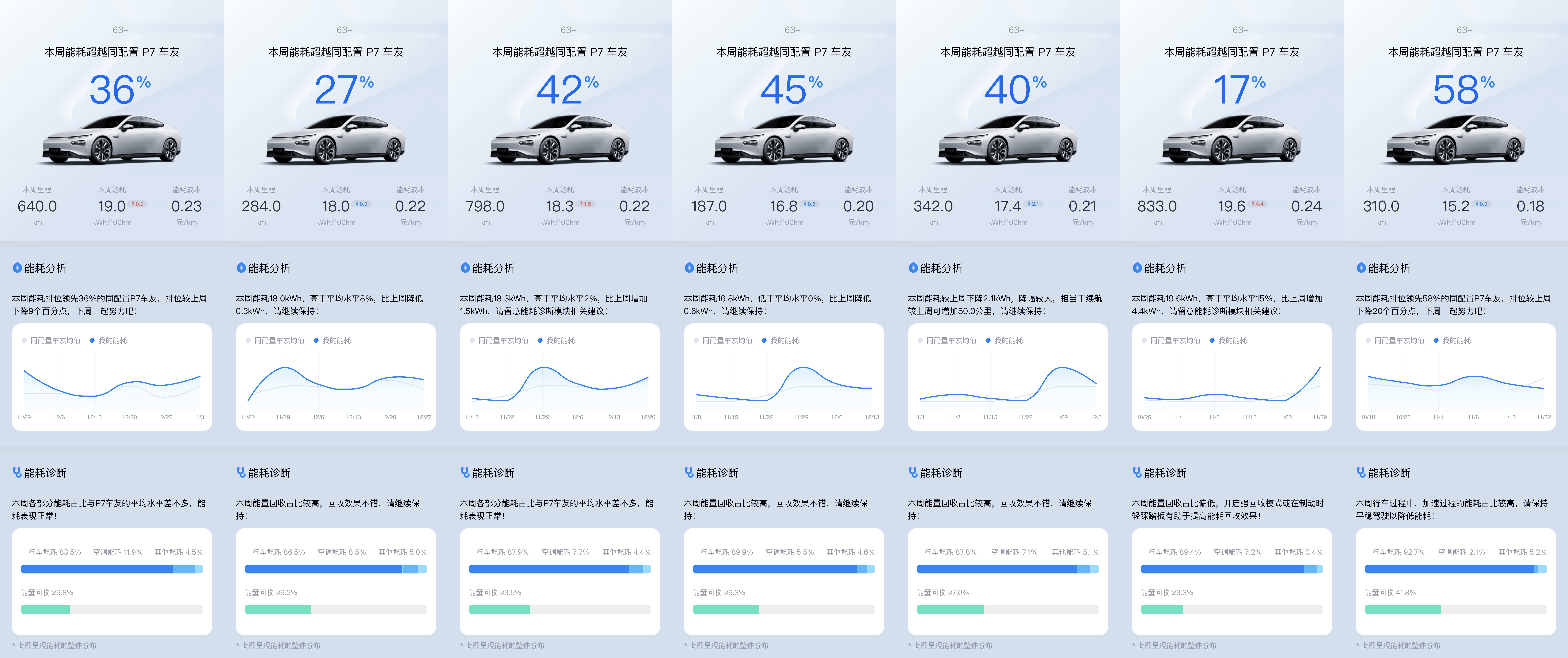
This is my energy report from November to now, for 7 weeks.
My driving style is not particularly energy saving, at least in most of the reports, I consume more electricity than 60% of my peers.
In relatively warm November, based on my driving habits, the power consumption is 15-16 kWh/100 km.
In relatively cold December, and in scenarios with more highways, based on my driving habits, the power consumption is 17-19 kWh/100 km.
In most cases, my commuting distance is about 300-400 km per week, even in the winter when air conditioning usage is relatively high, I can still manage to charge once a week.
Moreover, charging the P7 on a high-quality charging pile can replenish 400 km of WLTP endurance in just 40 minutes, which is very efficient.
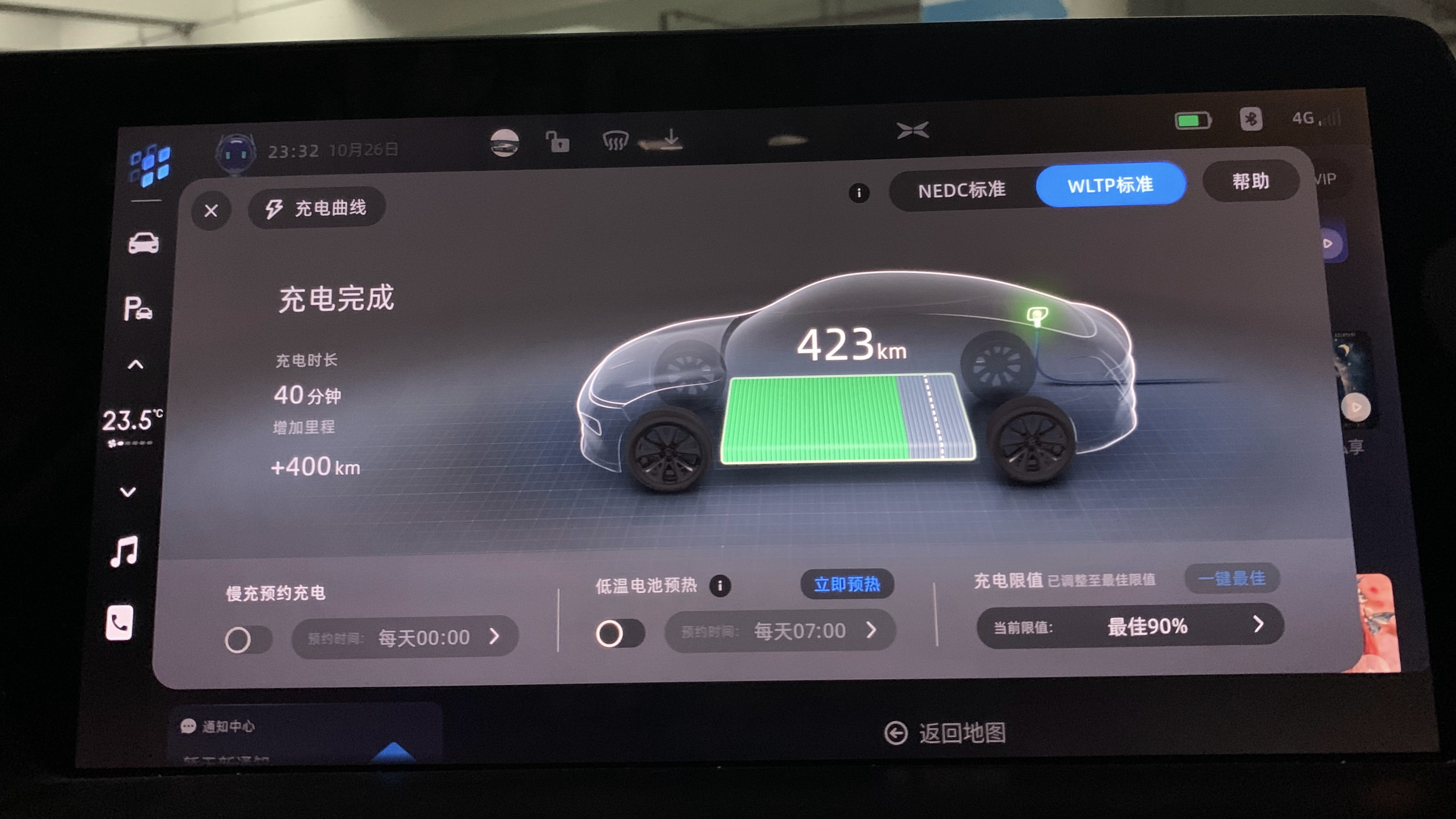
The long endurance largely eases the anxiety of energy replenishment and the user experience is very similar to fuel vehicles.
However, in some extreme scenarios, there are still some differences compared to fuel vehicles, especially for models with short endurance.
- Difficult to select a charging pile.
If you need to rely on third-party charging piles for each energy replenishment, the first barrier in front of you is how to find a fast charging pile among a variety of third-party charging pile brands near you.
Unlike gas stations, most of the charging piles on the market now have only 30-50 kW of charging power, with uneven quality, so it is a technical task to find a high-power charging pile.
- Hidden location of charging piles.
I believe that every electric vehicle owner has experienced navigating to the charging point and circling around for a few laps without finding the charging pile, compared to gas stations with big signs standing on the roadside, hidden charging piles are really unfriendly.
- Uncontrollable quality of charging piles.
Even if you have carefully selected a high-power charging pile, it is unavoidable that the charging pile may fail or be occupied by fuel vehicles.
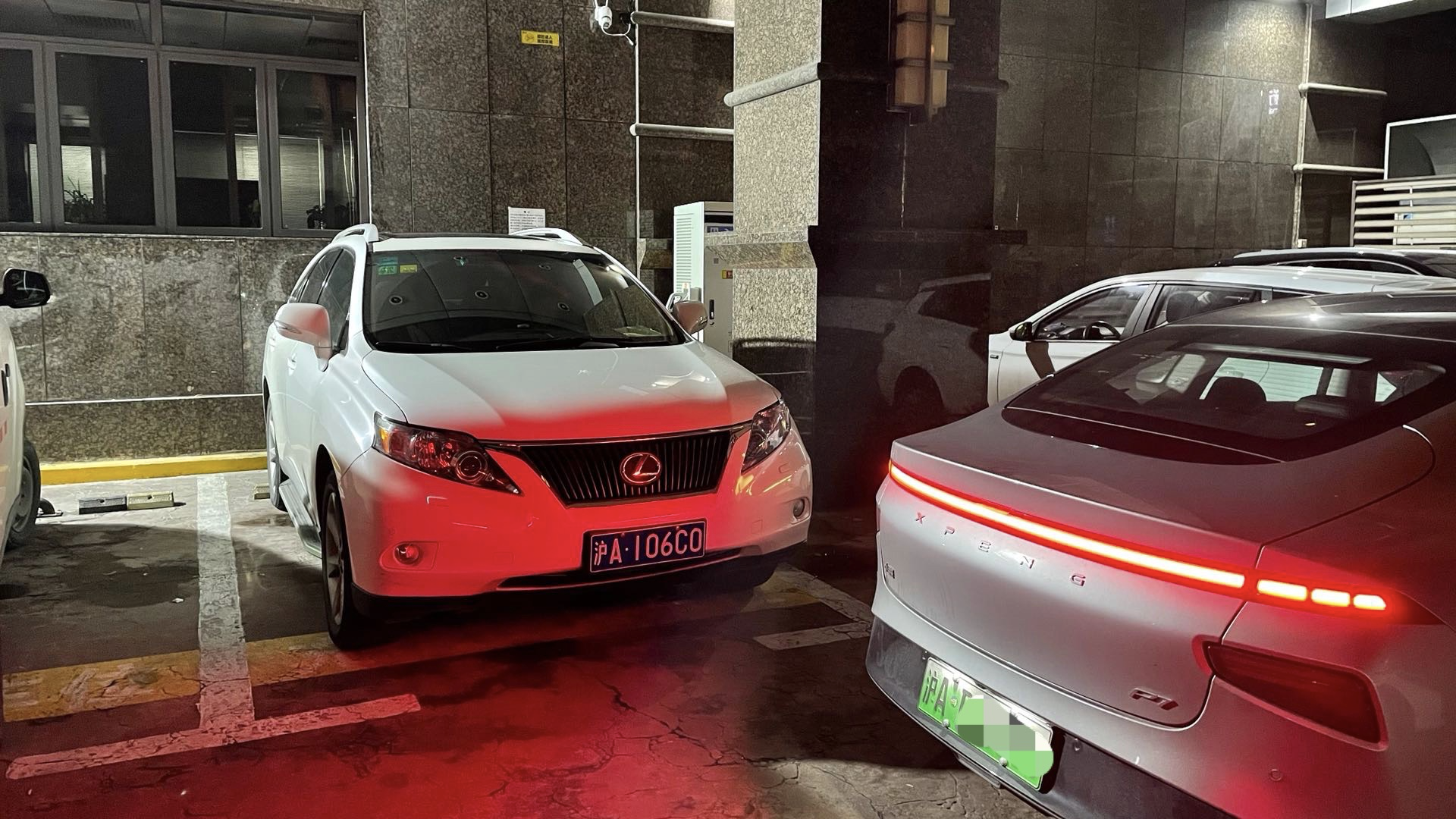 Based on the problems I encountered during the charging process, a clear conclusion can be drawn that the current range anxiety for electric vehicles is largely caused by the inconvenience of energy supplementation rather than the short range itself.
Based on the problems I encountered during the charging process, a clear conclusion can be drawn that the current range anxiety for electric vehicles is largely caused by the inconvenience of energy supplementation rather than the short range itself.
This is also why I said at the beginning that what XPeng is doing now is no less important than pushing the range of a car to 700 km.
What XPeng has done
Step 1: Self-built supercharging system.
Compared with third-party charging piles, there are three advantages for car manufacturers to build their own energy supplementation system.
- The environment of the charging pile is guaranteed.
Compared with the wild third-party charging piles, car manufacturers’ own piles will spend some energy on maintenance. Even if some charging piles are in the corners of underground car parks, car manufacturers will mostly put up guide signs at the entrance of the parking lot, leading you to the vicinity of the charging pile as soon as possible.
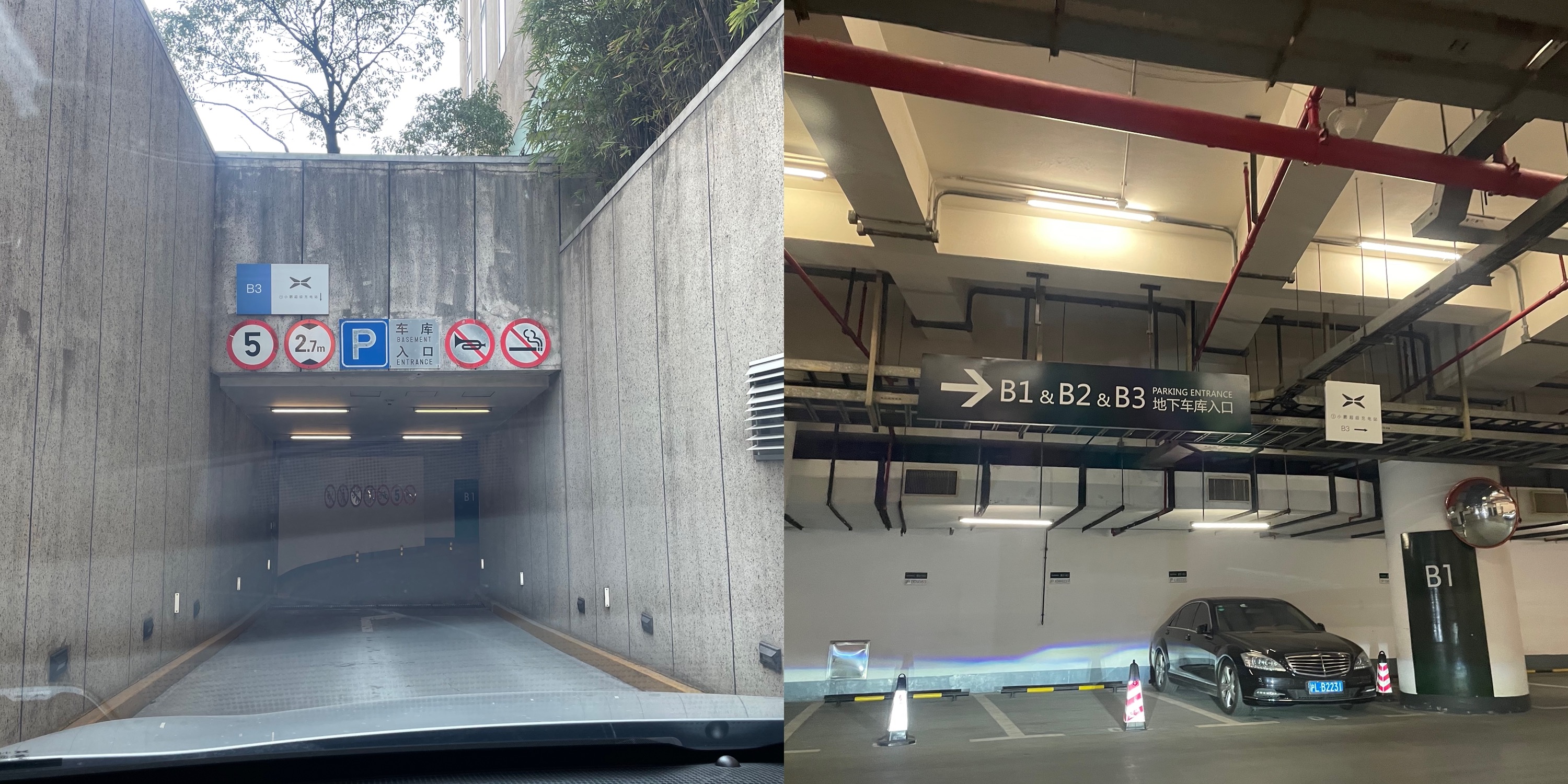
What’s more important is that the self-built supercharging with dedicated maintenance personnel basically does not have the situation of bad piles or gasoline cars occupying the charging spaces, which greatly relieves the owners’ “energy supplementation anxiety”.
As soon as there is gasoline occupying the space in the “Shanghai Xinmao Building Station” where I often go, the administrator will come right away to drive them away.

Here we can also explain why it is difficult to maintain third-party charging piles.
Shen Yanan, the CEO of Li Auto, said in an interview with 36Kr that the peak hours of charging piles are basically concentrated at three time points: lunch, dinner, and after 9 pm. Even if the cost of 2 yuan/kWh (electricity fee + service fee) is used for calculation, the hourly income is only about 100 yuan, which is far lower than that of gas stations and breakfast stalls, so it is difficult for third-party charging piles to make money.
If it doesn’t make money, how can it spend more labor costs to manage the charging pile? The charging experience would be worse without management, thus becoming a vicious cycle.
But the charging piles built by car manufacturers are different. Car manufacturers can completely use the profit from selling cars to support the construction of charging networks, and a better charging system can also affect more users’ purchasing decisions, thus selling more cars, using the money to build more supercharging stations, and achieving a virtuous cycle.
- The charging process is simple.
Thanks to the interconnection of the charging pile and car, when using XPeng’s self-built supercharging, the car owner does not need to take out the phone and go through the complicated processes of scanning the code, recharging, and starting. They only need to plug in the charging gun to charge smoothly, greatly simplifying the charging process.
This largely prevents iPhone users from having no signal in the underground garage.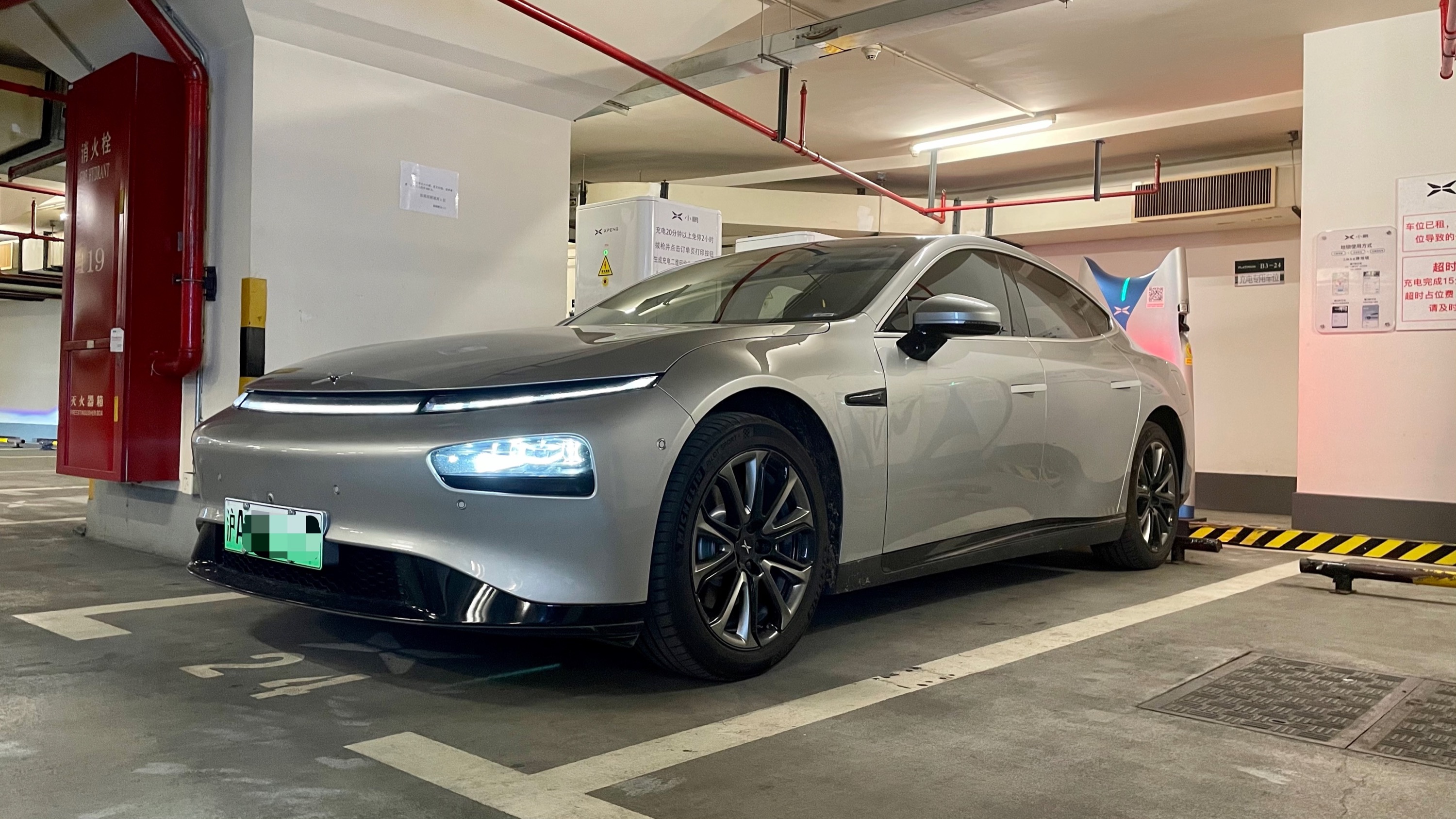
- Charging speed is guaranteed.
Automakers tailor their own superchargers according to their products, in order to provide users with the best charging experience. Therefore, whether it is Tesla, NIO or XPeng’s charging piles, the charging power has reached more than 90 kW.
This greatly reduces the difficulty of users selecting a charging pile. Just like when I see a charging pile with my own logo, I know that it will be able to charge 400 km WLTP range in 40 minutes.
After achieving the above three points, with a long-endurance model, the convenience of current car use is also infinitely close to that of fuel cars.
However, self-built superchargers also have two very big problems.
- High construction cost.
The charging piles must cover as large an area as possible with the more there are, but in the initial stage, when XPeng’s sales are not particularly high, it is inevitable that there will be a large amount of silent costs in order to provide users with better services.
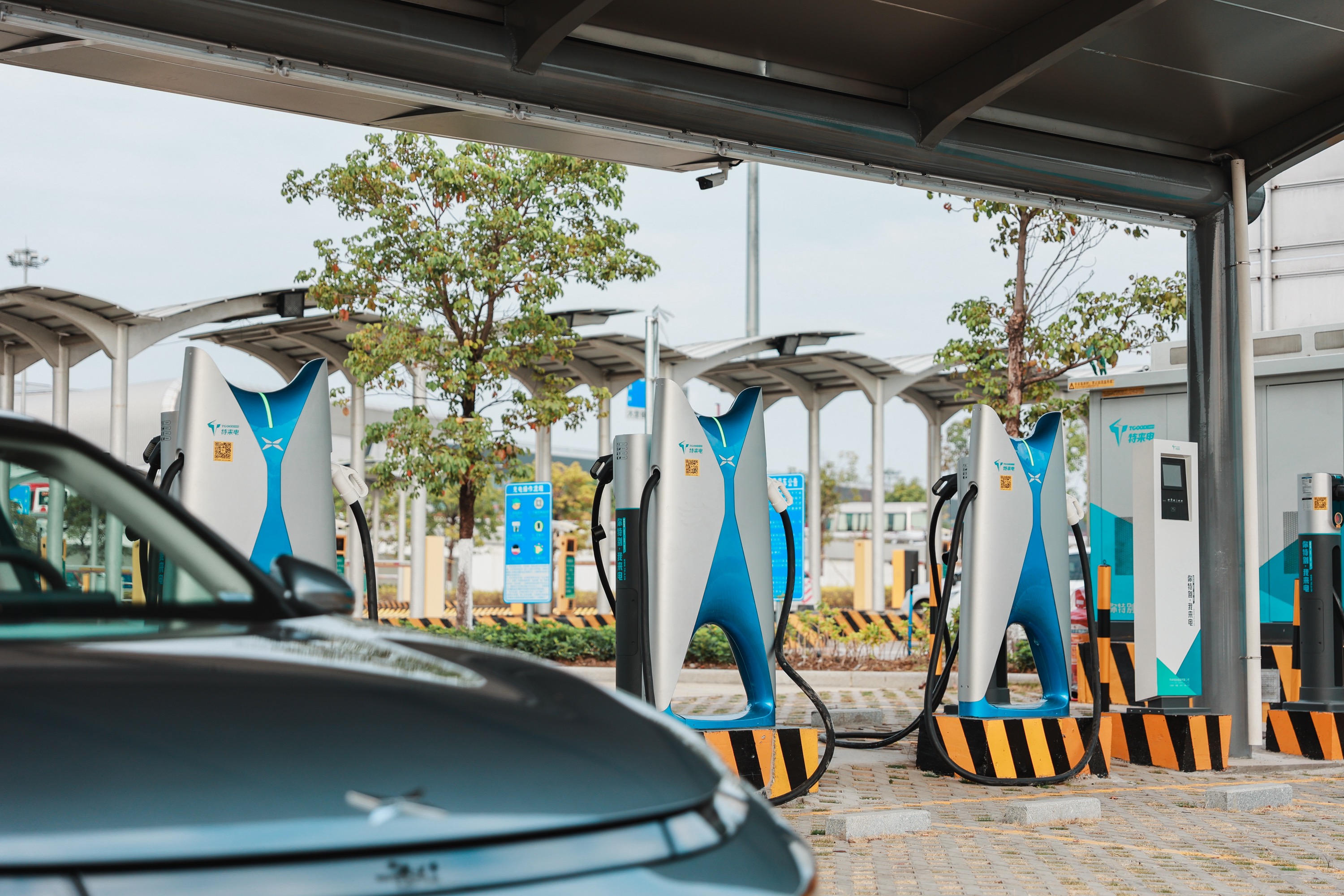
- What about technological updates and iterations?
Although XPeng’s current charging piles can meet the demand for high-specification charging piles, what about after the charging technology updates and iterates in five years?
Similarly, Tesla, which uses self-built superchargers, has determined its own technological route, allowing charging pile technology to lead the way.
The maximum charging power of the currently massively constructed V3 supercharging pile can reach 250 kW. Although this is very limited for current vehicles, it can ensure that existing charging piles have value if future vehicle technology supports it, and this investment is not wasted.
Faced with these two problems, XPeng took the second step.
Step 2: Sign a contract to cooperate with high-quality charging piles.
Just two months after taking delivery of my car, I wanted to complain that there were no XPeng self-built superchargers near my residence and workplace. However, when I refreshed the XPeng Car App, I found that a large number of “cooperative” charging piles had been added at regular intervals.
Most of the cooperative charging piles are high-quality charging stations with a guaranteed charging environment and charging speed, and most importantly, like the self-built superchargers, they are “free”.
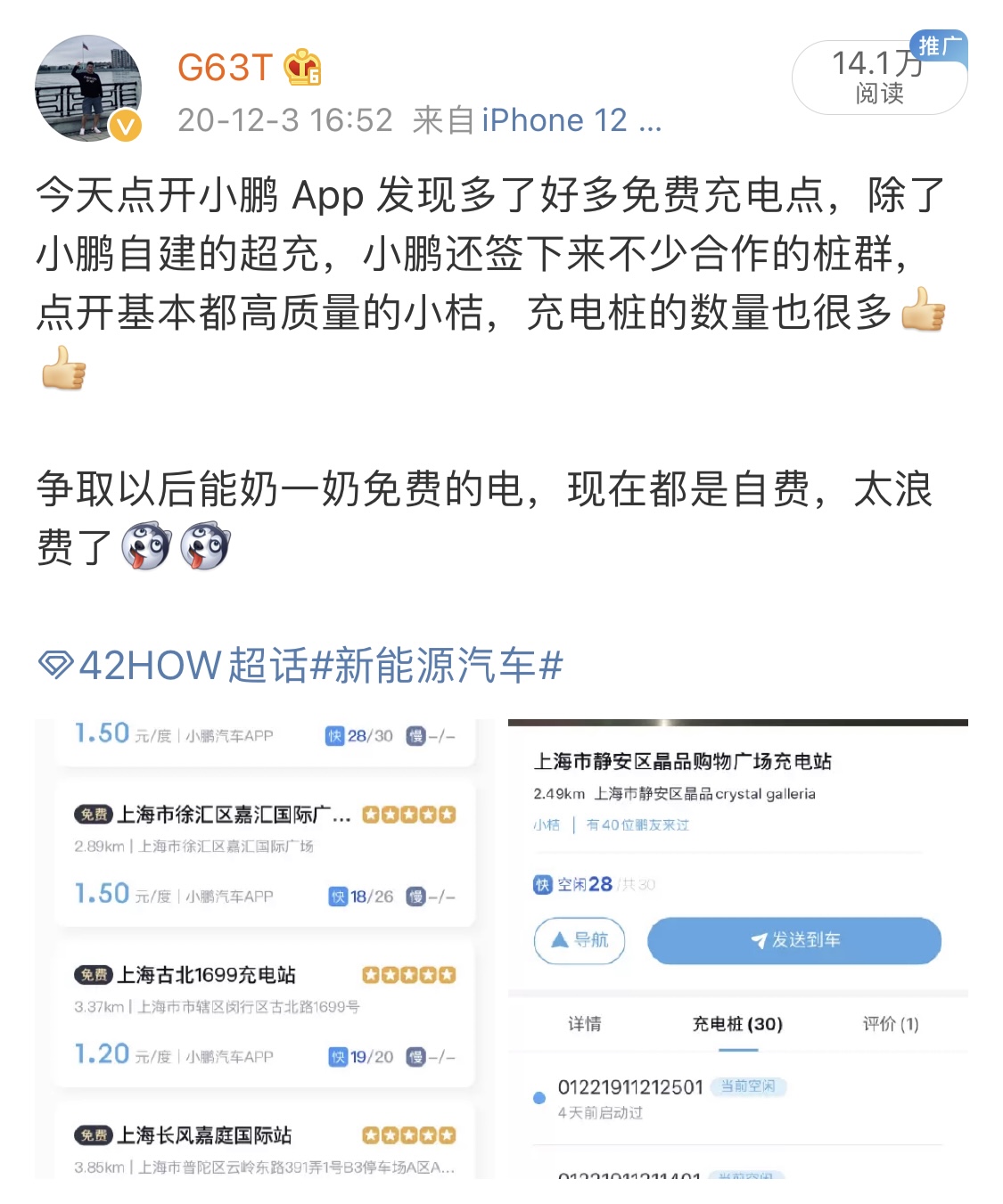 For XPeng, this is also a very cost-effective way. In areas with dense charging piles, it helps car owners find high-quality charging piles, achieving the same experience as building their own superchargers. In areas without high-quality charging piles, such as airports and highways, self-built high-quality charging piles are available.
For XPeng, this is also a very cost-effective way. In areas with dense charging piles, it helps car owners find high-quality charging piles, achieving the same experience as building their own superchargers. In areas without high-quality charging piles, such as airports and highways, self-built high-quality charging piles are available.
With these two measures, my 8,000km of driving in the past 3 months has never been anxious about battery life or charging, which is also an important reason why I am willing to place an order for XPeng in addition to its product strength.
Drive 20,000km for free every year?
After discussing the difference between self-built superchargers and third-party charging piles, XPeng’s superchargers have an additional advantage: lifelong free charging.
Although this may be the most appealing point, I still leave it to the end to say, because the free policy becomes more eye-catching only after the quality of the charging pile meets the requirements mentioned above.
According to the policy released by XPeng Motors, each XPeng car owner can receive a free quota of 3,000 kWh of electricity every year.
If calculated based on the electricity consumption of 15 kWh/100 km, 3,000 kWh of electricity means that each XPeng car owner can drive 20,000 km for free each year, a distance far greater than the commuting distance of most drivers in one year.
If calculated at a rate of 1.5 yuan per kWh, 3,000 kWh of electricity means that each car owner can save 4,500 yuan on charging every year.
Taking myself as an example, since I bought the car, I have spent less and less money on charging, and the free charging policy will make me more willing to drive out.
During the New Year’s Day holiday, I drove with my friends from Shanghai to Suzhou Taihu Lake for a round trip. Thanks to the long endurance, I didn’t need to fully charge the car before setting off, nor did I need to find a charging pile to recharge during the process of visiting Suzhou. Thanks to the good XPilot, I just needed to sit and watch it do the driving on the highways. Thanks to the free charging policy, apart from the tolls, I had no additional expenses for this trip.
The end
For friends who have home charging conditions, obviously they don’t have the above concerns. Home charging is also the best way to recharge an electric car and has long surpassed fuel vehicles in terms of user experience.But due to China’s population density and parking conditions, it is inevitable that most people do not have access to home charging, so in order to develop pure electric vehicles in China, charging infrastructure is an essential part.
From the sales volume in 2020, we can see that Tesla, NIO, LI, and XPeng, which have the best sales volume in the C-end market, have solved the users’ charging problems either by supercharging, battery swapping, or extending the range, besides having outstanding product strength.
The electrification transformation is not solely the responsibility of car companies. We hope that while addressing range anxiety, people could also pay attention to the convenience of charging.
As a P7 owner, the biggest expectation for 2021 is that XPeng can deploy charging stations at highway service areas to replace those uncertain charging piles and provide us with a more perfect travel experience.
This article is a translation by ChatGPT of a Chinese report from 42HOW. If you have any questions about it, please email bd@42how.com.
